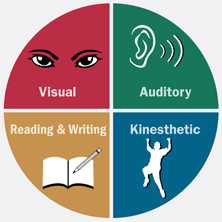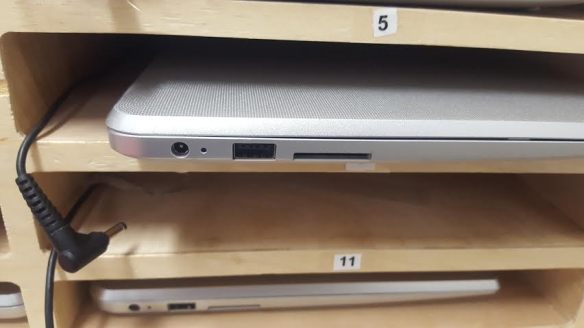For the first time in my teaching career, I will be leaving students I’ve taught for a few years. This has hit me really hard in a lot of ways because, for the first time, I’m not going to see the amazing students I see every day. I know there will be new students, but there is an overwhelming grief that comes when you are leaving students who you’ve made a connection with. I’m grateful for this grief mindset because, honestly, I don’t know if I would have had this moment of clarity if I was returning next year. At the time of writing this, my students did not know I was leaving.
I had a very vulnerable moment with my students today. Over the course of my four years of teaching, I’ve seen an increase of students coming into the classroom saying, “I can’t do it.”
This comes in a variety of forms. “I don’t know what to write. I’m bad at this.”
“I just don’t understand math.”
“Man, I’m not an artist. How can you expect me to do this?”
So, when the phrase, “I just can’t write essays,” came up today. I saw what I have seen time and time again. The student did something that drives teachers absolutely insane: behaved with complete disrespect. There seems to be a variety of things students do because kids are just “plain ol’ disrespectful these days”: going on their phones, talking loudly to distract others, not starting their assignment, putting their head on your desk and leaving a strange greasy sweat mark (who knew their heads would be so greasy?!) coming in late, or worse not coming in at all.
I get it. This is super frustrating as an educator. And I’ve reacted the way I’m guessing many of you have: trying to help, offering extra time at lunch, getting frustrated, stress eating the snacks in your class so that you can’t tell them the internal monologue in your head, telling them to be responsible and do their job as a student, repeating the expectations, asking for respect, kicking them out of class, sending them to the office. My reactions are always based on a lot of things, and it usually depends on what’s going on in my personal life, like not getting enough sleep.
But today, I had a different reaction (because I’m leaving, so what’s to lose?). I didn’t react.
I simply said, “Can I ask you guys a question and just be honest with me…. Do you feel you can either do something or can’t and that’s that?”
And there I saw it: a classroom of students, simultaneously bopping up and down. Yes. Yes. We feel like we are either good at something or not.
You don’t have to take my word for it, but they knew exactly what I was talking about it. These grade 9 students knew already.
So, there a couple reactions that might immediately come to mind…. Things like, “that’s crap. I gave you clear instructions.” Or maybe, “I told you if you needed support to come and find me. So that’s on you.”
Those are totally normal reactions as educators, by the way. I’ve had them before and will likely forget this letter one (or several) days in June and react like it again.
But my reaction today was heartbreak.
No one wants to be bad at something. That goes against human nature. Every person wants to feel successful in what they’re doing, even if it’s not their strength. Why choose to be unsuccessful? That doesn’t make any sense. So why are students saying this, time and time again?
If you’ve lost interest in this story already, then you might as well stop reading at this point because it won’t matter. You’ve already decided. You’ve already decided I don’t have enough teaching experience to know the realities of the profession, or one simple story with my grade nines does not an all-knowing teacher make. It’s fine; I get it. You’ve already decided this doesn’t matter, even though I haven’t finished, and that’s the problem.
You just went through what students are going through every single day in our education system.
The students have already decided that they “can’t do it” before they enter your classroom. That’s not your fault. It wasn’t your choice. You didn’t cause it. You can’t change it.
I really want to make sure you get that part. You can’t change it. You can’t change the past. You can’t change that kids won’t stop talking about Fortnite or the fact they have cell phones. So, let’s stop talking about it, okay? No, seriously. Stop talking about it. You are wasting your energy on complaining about realities that exist, regardless on if you agree or not. Think of what teachers could do if they used the energy they have on what changes they could make. Yes, it’s going to require you to rise above the various things you disagree with, but you can’t change them anyway. So,what can you change?
What can YOU change?
What can you change tomorrow? What can you change in a year?
The truth is everything we do is a choice. It’s a choice that I react the way I do with students who “can’t do it.” My students make the choice to misbehave in class. The difference is they don’t know they are making a choice; they honestly feel like trying isn’t worth it because, let’s be honest, our society doesn’t reward trying; it rewards doing.
Well, here are the choices I made today in my grade nine classroom.
-
- I made the choice, despite being an “expert” English teacher, to tell them that I was at a grade 3 reading level in seventh grade. I usually choose not to admit that because it’s not something I am very proud of. Again, no one is proud of not being successful. And I am their English teacher, so I want them to think I can teach them with my super, amazing “expert” knowledge that I seemingly got out of nowhere.
- I made the choice to tell them that I got a 51% in chemistry in high school. And that’s okay because it was the best I could do. I went to class. I tried. I didn’t get it. That’s alright though because there is another guy in the school teaching chemistry– sweet!
- I made the choice to explain that there is a very big difference between not being able to do something because you can’t and not being able to do something because you aren’t trying— a message students don’t seem to be getting.
- I made the choice to tell them I’ve never failed a student who was genuinely trying their best and just couldn’t quite get it because I knew that student gave me the most they could give. By the way, I’ve never had a struggling student who tried their best for the entire semester because they’ve constantly been told by society that trying doesn’t count for anything, and they don’t believe I’ll be different (because sometimes I’m not, but at least I am trying).
- I made the choice to tell them the next time they have the urge to say, “I just can’t do xyz” to try and have a different reaction. I told them changing their reaction will be difficult to do, and they might fail at it the first couple times, because it’s a habit. But it’s okay because they will have opportunities to try again.
- I made the choice to say it’s okay that English class isn’t their strength because they’ve got some pretty amazing talents elsewhere. It’s fine if they can’t do the assignment, as long as they give me all they got. I chose to mean that and not just say it.
- I told them the way they are feeling is not their fault and validated what they told me. I said I believed them. I said the system has failed somewhere because, at one point, they tried really hard, and it wasn’t their strength, so they failed. It didn’t matter that they had tried. And then they stopped trying (shocker).
- I made the choice to write this letter for my students because their opinion is more important to me than anyone else’s.
- I made the choice to be potentially laughed at in staff rooms because teachers think I’m disillusioned with the education system.
- I made the choice to have these authentic conversations with my students, which you may think aren’t very insightful, even though I could have chosen an easier path of blaming them for not being motivated.
- I made the choice to read this letter to my classes before posting it because I don’t want to speak up if it’s not their truth, and, if it is, I want them to hold me accountable for my words. Their response when I asked them if I should post it was, “SEND IT!”
Now, this is what I’m choosing to work hard on doing for the present and future:
- I’m choosing to be vulnerable and share this letter because I believe I have something valuable to say that’s not being talked about in society.
- I’m choosing to publish this, before having another teaching position next year, knowing it’s a risk. Because if I don’t get hired at another school due to what I’ve said in this letter, then I won’t be a good fit in that environment and my administration might as well know it now.
- I’m choosing to write this to keep me accountable for my words to my students, future coworkers, and administrators.
- I’m choosing to collaborate and support co-workers who are struggling with some of the things I’m strong at simply because it improves students’ lives.
- I’m choosing not to say, “I’m sorry you feel that way,” when a student comes to me complaining about an assignment because it 1) does not express remorse and 2) makes it clear I think my student’s reaction is irrational.
- I’m choosing not to blame my students for their lack of motivation in learning because it completely alleviates my responsibility as an educator to meet their needs.
- I’m choosing to seem naive to others because I honestly believe students want to learn and their behaviours are a result of oppressive, invisible forces that perpetuate the idea they aren’t intrinsically motivated.
- I’m choosing to put students’ mental health before any curricular outcome.
- I’m choosing to outwardly state how grateful and proud I am of students when they meet the high expectations I know they’re capable of.
- I’m choosing to have honest, open communication with students who aren’t meeting those expectations and, rather than lowering them, construct a plan together to reach their highest potential.
- I’m choosing to use my position of power that I’ve been given in society to make decisions with the students’ best interests at heart because I am beginning to understand why they’re drowning.
- I’m choosing to make my struggles visible, so they know it’s okay to mess up or not understand something as long as they are trying.
- I’m choosing to never become a mediocre version of myself for other people because my students deserve me at my best.
- I’m choosing to believe what my students are telling me is how they are really feeling and do my best every day to listen to them with an open heart and the respect they deserve.
You might not believe a single word I am saying right now, and that’s your choice. Honestly, I respect it. I’m glad we live in a society where people can make their own choices, or I wouldn’t be able to write this letter right now.
Heck, you might be questioning my motives for writing this letter to begin with. That’s your choice. I don’t care because I know the only reason I’m doing it is to support my students who said they’re struggling.
Believe it. Don’t believe it. Read it. Don’t read it. Digest it. Don’t digest it. Think I know what I’m talking about. Or don’t.
I can’t change any reactions I get to this, so I’m not wasting my time worrying about it. You can choose how you react.
I really don’t care. I mean it. It’s your choice.
But I will say this for the sake of students, and because they asked me to be their voice: I hope some people in the education system start making different choices. It’s okay if you fail because you’ll have tomorrow to try again.
I want to apologize to my former students for the choices I have made in the past that made them think trying wasn’t important. I want to ask them for forgiveness because I am now making a choice to do better, even though I will screw up sometimes.









 ducators for a long time. I remember taking a multiple choice test in my first University class where they had us choose “how best we learn.” Am I an auditory learner? Visual? Kinesthetic? I’m not completely sure, but I am fairly certain a
ducators for a long time. I remember taking a multiple choice test in my first University class where they had us choose “how best we learn.” Am I an auditory learner? Visual? Kinesthetic? I’m not completely sure, but I am fairly certain a
 ce the content. I made my students create YouTube videos to explain process last year, ranging from changing oil in a car to yoga because I simply didn’t see the relevancy in creating an essay of explanation. We seem to be creating tension between media and content, which might help explain why students are not as engaged in classes. Natalie describes
ce the content. I made my students create YouTube videos to explain process last year, ranging from changing oil in a car to yoga because I simply didn’t see the relevancy in creating an essay of explanation. We seem to be creating tension between media and content, which might help explain why students are not as engaged in classes. Natalie describes

 ate an environment beyond the LMS, I want to be sure students can access everything they need to support their learning. I had a lot of trouble creating an
ate an environment beyond the LMS, I want to be sure students can access everything they need to support their learning. I had a lot of trouble creating an 




 Yeah, it happened.
Yeah, it happened.